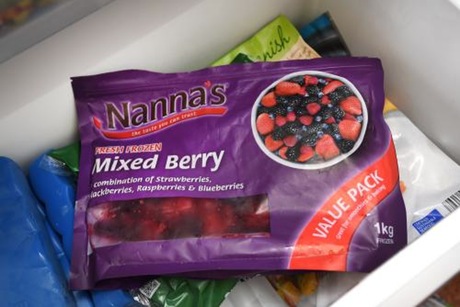
Australia places higher standards on the food produced by its own farmers than it does on the products it imports, creating a situation rife for “drugs and bugs” to enter the food supply, an infectious diseases expert says.
Professor Peter Collignon, an infectious diseases physician and microbiologist with the Australian National University, said the recent importation of berries contaminated with hepatitis A highlighted a broader failure to test imported foods for a range of diseases.
“It’s a real public health problem,” Collignon said. “We put higher standards on our farmers than those who we import food from, even though we are importing from countries who are watering and spraying their plants with contaminated water which is rife with human waste.
“And we don’t do any testing for these bugs. We seem to take the farmers’ and the food companies’ word for it that the tests have been done at their end.”
The Australian government should appoint independent testers to assess a small portion of imported fruit and vegetable products, he said. These products were particularly dangerous, because they were usually not cooked and freezing only helped to preserve bacteria.
“We should sample a small portion of products and if the company fails the test, then next time a larger portion of their product could be tested until they meet the standards we set,” Collignon said.
“But it’s stupid not to test anything and to trust the companies to do it. One decade ago, testing was much more expensive than it is now, but these days you can test for bacteria like E. coli relatively cheaply and the more you test, the cheaper it becomes.”
Foods were currently tested for fecal matter, he said, but not for specific pathogens, because those tests were more expensive.
Australia also was not testing imported food rigorously enough for antibiotic residue from spraying fruit and vegetables to ward off plant diseases, Collignon said. When ingested, these drugs could build up in the body, leading to antibiotic resistance.
“We should have a stronger strategy that we enforce to prevent imported drugs and bugs,” he said.
While the hepatitis A outbreak had affected enough people to trace back to certain brands of berries, Collignon said that wasn’t always the case, and that smaller outbreaks of disease also occurred which could not be traced back to a specific product.
The safest way to avoid food contaminated with waste water or antibiotic residue was to buy Australian, Collignon said, where farmers are held to rigorous food safety and handling standards.
A Food Standards Australia and New Zealand spokesperson said for packaged foods, like frozen berries, country of origin labelling must be legible and prominent, and be in English, though text size was not prescribed.
“But for unpackaged foods such as fruit and vegetables, country of origin information must be displayed on the food and be at least 9mm in height, or at least 5mm in height if in a refrigerated display cabinet,” the spokesperson said.
However, a Choice survey from last year found consumers had difficulty interpreting country of origin labelling.
Of 700 respondents, only 12% were able to accurately identify the meaning of “Made in Australia”. If a product is Made in Australia, it doesn’t necessarily mean that the ingredients were grown or sourced in Australia.
But on Wednesday, the prime minister, Tony Abbott, rejected a crackdown on food testing and labelling in response to the outbreak, saying it was the responsibility of business “not to poison their customers”.
An antimicrobial resistance expert from the University of Adelaide, Associate Professor Darren Trott, said Australian-grown and produced food was among the safest in the world.
But imported food was often cheaper, making it attractive to consumers, he said.
“We owe it to ourselves as a country to eat Australian,” he said. “We produce high quality, great food and although it costs more, it is safer.”
